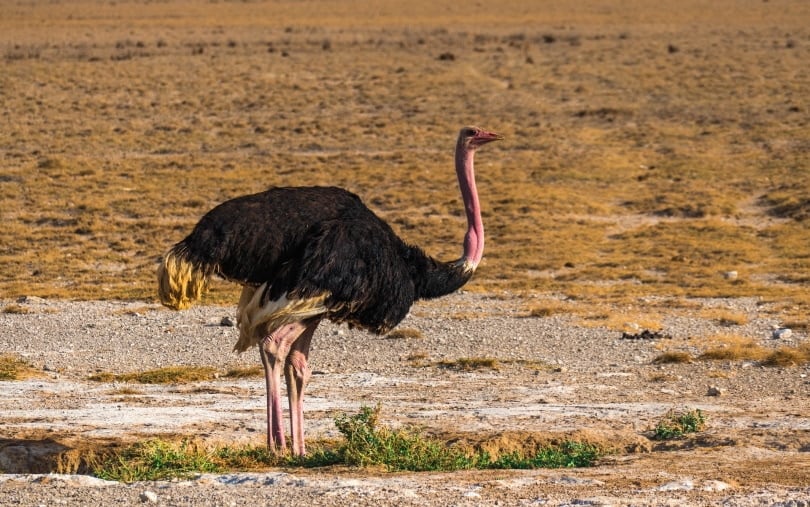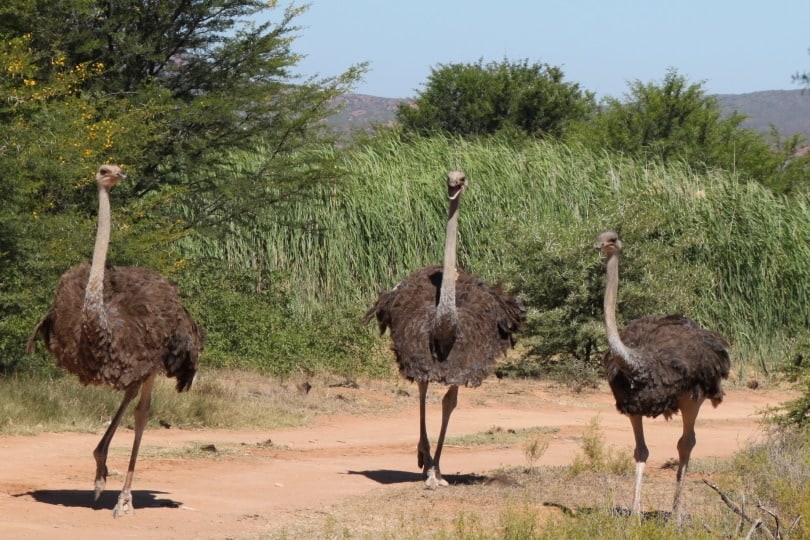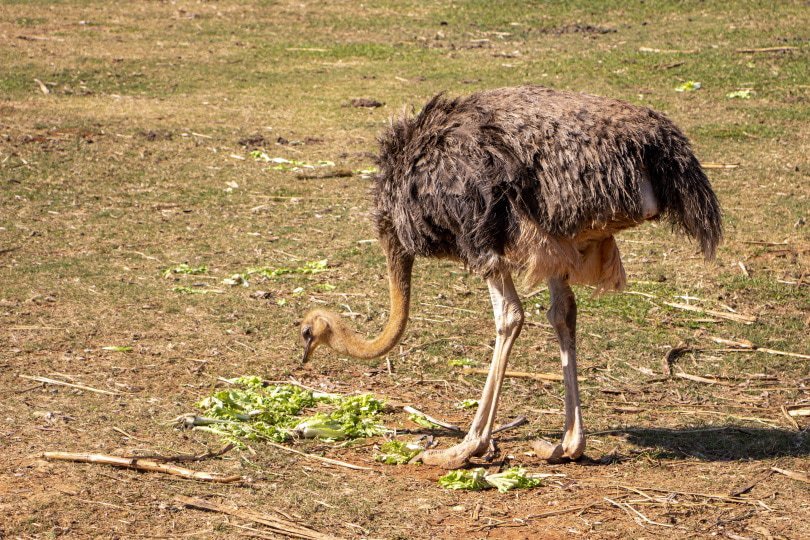Ostriches are the world’s largest flightless bird. They’re native to Africa’s semiarid plains and woodlands, though there is a population of feral ostriches in the Australian outback that has escaped from ostrich farms.
These eccentric-looking birds have a digestive system that’s as unique as they are. They are not carnivores as they don’t only eat meat, nor are they herbivores as their diets aren’t primarily made of plant-based materials. Ostriches are considered omnivores as there isn’t much that they won’t eat, including things that many other animals cannot digest. Keep reading to learn everything you’ve ever wanted to know about an ostrich’s diet.

What Do Ostriches Eat?
Now that you know that ostriches are omnivores, you might be wondering what types of food they prefer to eat.
While they tend to favor plant-based materials like grass, fruit, leaves, bushes, roots, flora, and seeds, they won’t shy away from small vertebrates like lizards, snakes, and small rodents, as well as invertebrates like insects.
Ostriches are not hunters, so they will not seek out or prey on other animals. However, they are considered scavengers, so they won’t say no to eating the leftovers from other animals.

Newborn ostrich chicks will absorb much of the yolk from their egg’s yolk sac. This will provide them with the sustenance they need for around a week. During this time frame, they’ll start learning to walk and will begin following their parents or other adult ostriches in their group, who will take them to food so they can forage. Unlike other baby birds, ostriches don’t participate in parental feeding. Instead, the babies learn to feed themselves instinctively. Baby and juvenile ostriches grow very quickly, at around one foot per month, and can begin feeding on adult-sized food at around one or two months of age.
Ostriches in captivity will have a special diet consisting of commercial ostrich feeds. This feed will consist of the vitamins and minerals ostriches need to thrive as well as the gritty material they need to assist in proper digestion.
Ostriches get a lot of their hydration from the plants that it eats so they can survive for several days without purposefully seeking out water.
How Do Ostrich Digestive Systems Work?
You might be surprised to learn that ostriches don’t have any teeth at all. This can make digestion rather difficult. To help with the digestion process, ostriches will swallow pebbles or rocks and store them in a part of their stomach called the gizzard. Their gizzards can hold over two pounds of material at a time, of which up to 45% can be sand and pebbles. They won’t digest this gritty material but instead will use it as a way to grind down the food that they consume so it can be more easily digested. As time goes on, the rocks themselves will begin to wear down and erode, they also regurgitate them.
When ostriches eat, their food travels down their esophagus in a bolus (a ball-like substance that combines food material and saliva). The bolus can be as much as 210 milliliters. After the food passes through the neck, it enters the gizzard, where the aforementioned rocks will start to do their digestive duties.

Ostriches’ intestines are 14 meters long which helps them to squeeze every last mineral and vitamin from the plants they eat.
One other unique thing about the ostrich is that it won’t choke no matter how recklessly it eats its food and despite not having an epiglottis – the flap that prevents humans from getting food or drink stuck in our windpipes. Ostriches have a wide glottis (opening to the windpipe) that must close during swallowing to prevent choking. When the glottis is closed in an ostrich and its tongue moves backward to begin the swallowing process, the root of the tongue folds and cradles the glottis. There’s an inverted U-shaped pocket at the base of the tongue that encases the ostrich’s glottis and seals it off from food and liquid. And as an additional layer of choking prevention, two projections (lingual papillae) hook over the ostrich’s laryngeal mound.

Final Thoughts
Ostriches are unique animals with a very complex and interesting digestive system. While it would seem that they prefer to make up the bulk of their diet from plant-based materials, an ostrich won’t say no to the occasional lizard or mouse. They also aren’t afraid to nibble at any animal carcass they come across and are certainly not opposed to eating geological material like rocks. Who’d have thought that eating rocks would do anything to help the digestive process?
See Also:
Featured Image Credit: Wirestock Creators, Shutterstock
